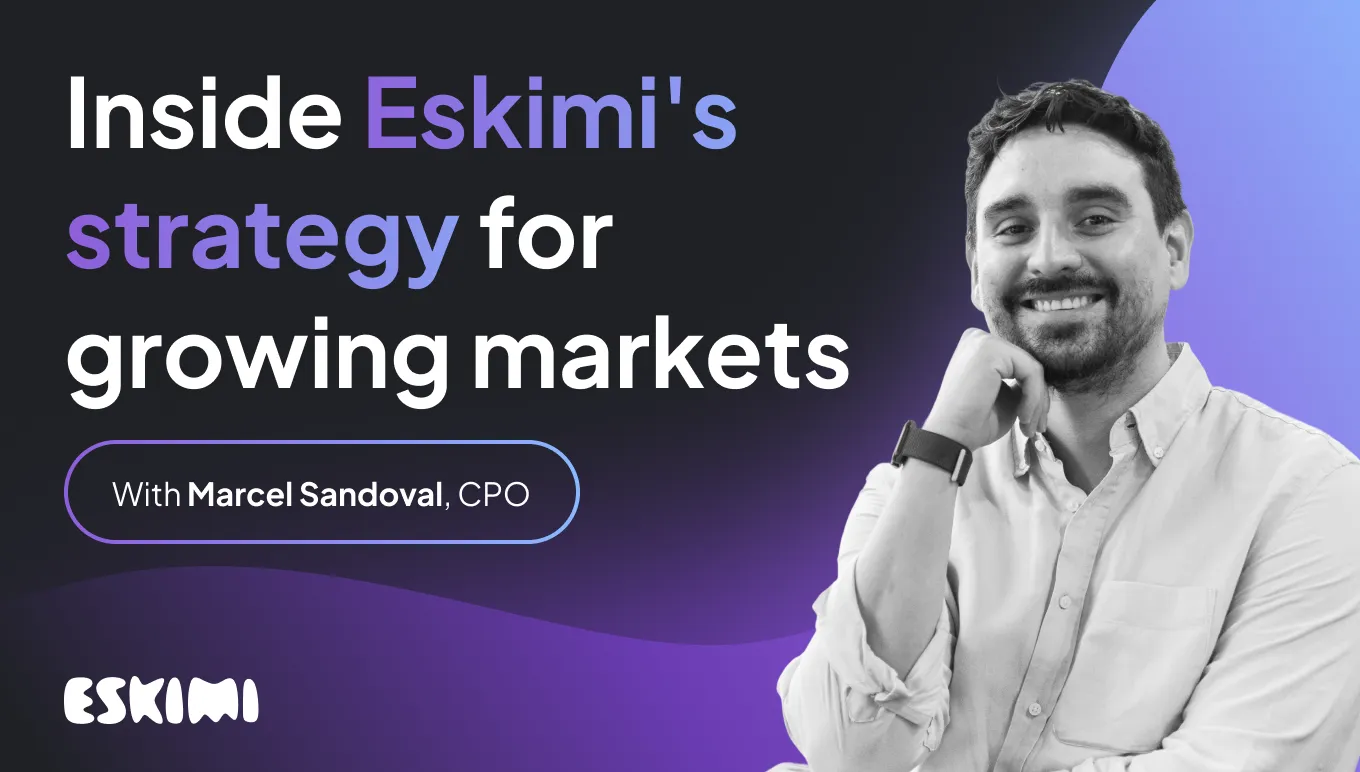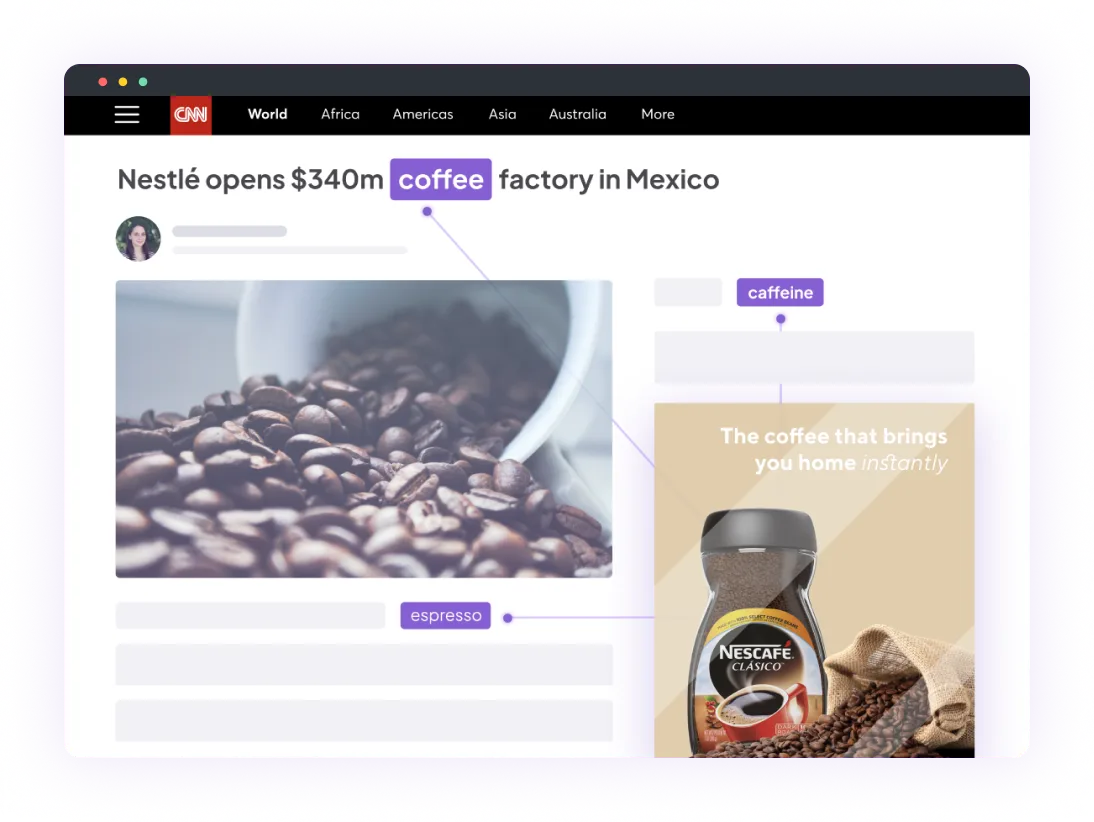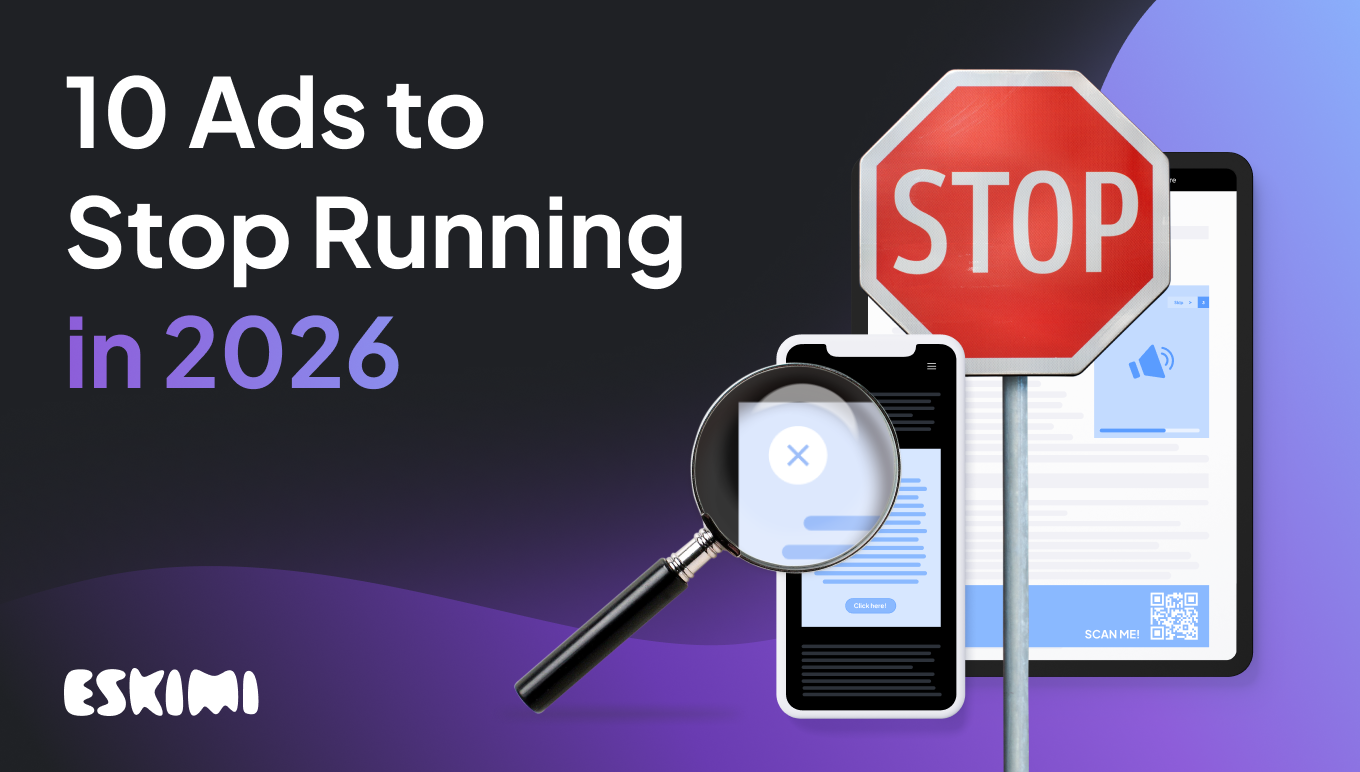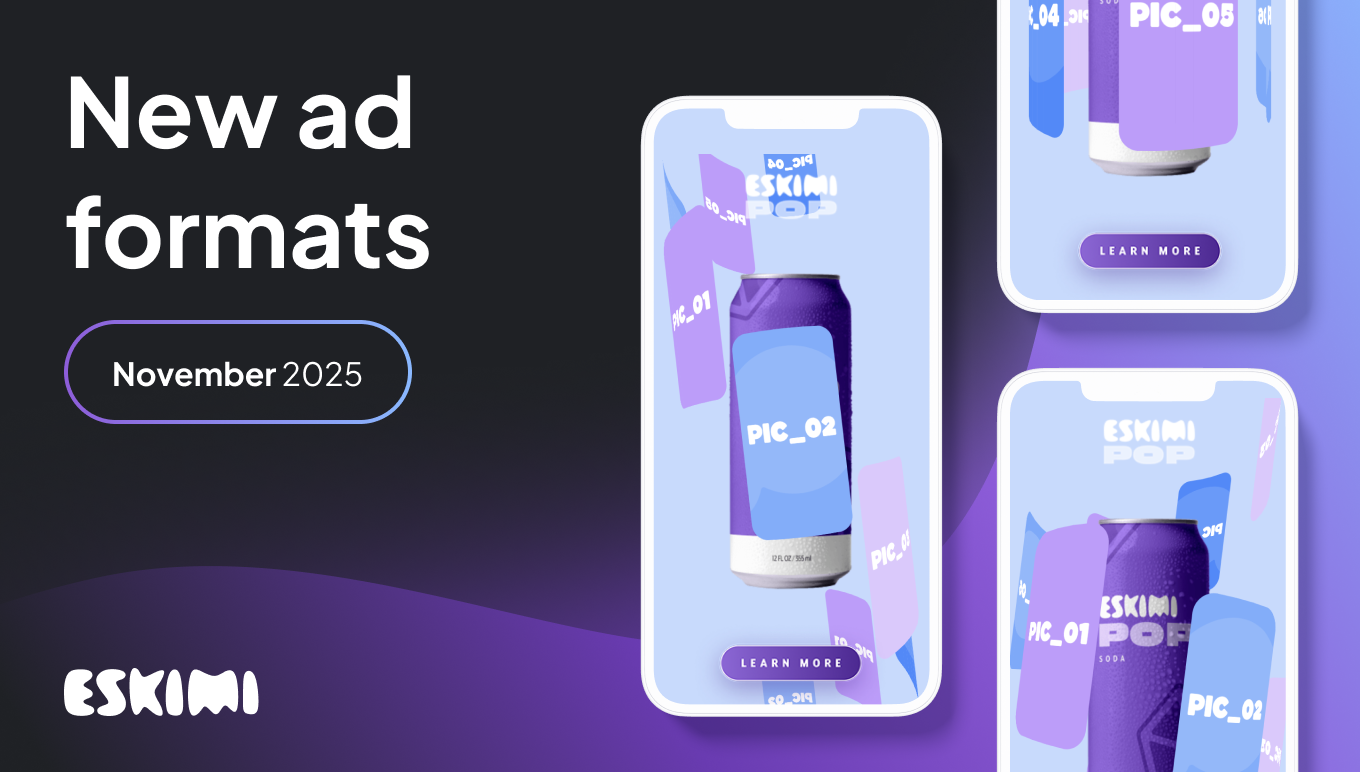Building adtech for the other 90%: Inside Eskimi's strategy for growing markets

Most ad tech platforms are designed with New York, London, or Sydney in mind. But what happens when those same tools are dropped into markets with different languages, price sensitivity, infrastructure, and user behavior?
For Eskimi, the answer has never been to wait for global players to catch up – it's to build what the market actually needs.
In this interview, Eskimi's Chief Product Officer, Marcel Sandoval, explains why global adtech often fails outside of Tier 1 markets, how Eskimi has turned those gaps into a competitive advantage, and what’s in store for the future of programmatic advertising.
Let’s dive in.
Q: What are the biggest challenges you face in growing markets, and how do you deal with them?
Each market comes with its own unique set of challenges – and that, in itself, is one of the biggest hurdles for us as a global company.
If I had to highlight one major issue, it’s that most “global” ad tech solutions are primarily built for Tier 1 markets, such as the US, EU5, or Australia. In some European, African, and Southeast Asian markets, they either don't work due to local nuances, like less popular languages, or they are priced at a point that isn't sustainable.
So, we build our own. When we see a gap in the market that no one else is addressing, we step in and fill it ourselves. It’s a challenge, but it has created a lot of opportunities and has led us to have one of the most complete ad tech stacks in the market.
Q: Can you share examples of Eskimi's custom solutions?
One example is our SSP, which we built in-house to better serve the markets we operate in. It’s not always about reinventing the wheel. Sometimes the core tech exists, but it hasn't been adapted for local realities like language, pricing, or how clients actually use the tools.
Another strong example is our publisher trading desk. We saw a clear gap and built a solution by combining the right mix of tech and service to meet that need.
Many global platforms are rigid, one-size-fits-all, with little room for adaptation. And when you need support, it's often not there.
There's a quote that stuck with me: “The hardest thing in this industry is still getting someone to pick up the phone." That pretty much sums up our approach – we stay close to the client.
We actively involve them early in the product development process – showing prototypes, soliciting feedback, and adjusting direction based on their needs. It’s a collaborative loop. We can’t afford to build in isolation and hope it sticks. Getting it right early is key.

Q: How do you ensure Eskimi stays relevant as the industry evolves?
We’re big enough to be a stable, global business, but small enough to move quickly when trends shift. Especially with AI, our time to market is often faster than larger adtech players. That speed only matters if we’re building the right things, so we double down on client feedback to anticipate needs and deliver timely solutions.
Q: What innovations is Eskimi exploring to future-proof its platform?
We’re investing in advanced contextual capabilities, not just because global solutions often fall short in our markets, but also because identity signals are declining, even if cookie deprecation has been delayed.
We also see a clear shift in the market: publishers and advertisers are moving closer together. With our fully built tech stack, we're well-positioned to support that. In some markets, we already run campaigns using our DSP exclusively on supply from our own SSP. That's a powerful combination—especially when paired with our local teams.
Q: What's the biggest challenge clients face — and how does Eskimi solve it?
The biggest challenge is complexity. Most major platforms offer powerful capabilities, but their workflows can be overwhelming, especially for simpler campaigns or newer users. We’ve focused on streamlining the experience, keeping in mind that many hands-on users are entry-level professionals who need to get up to speed quickly.
At the same time, programmatic is still a people business. Without responsive, high-quality local service, the tech alone wouldn't be enough. That combination is what sets us apart.
Q: What would a "perfect" programmatic ecosystem look like, and how close are we to achieving it?
There's a lot of uncertainty as content consumption shifts. Users are turning to AI for answers – meaning less web traffic – while younger audiences treat social media like previous generations used the open internet.
Wherever things go, it's a chance to learn from past mistakes and focus on building a more interoperable ecosystem. That's been a key challenge so far – slow adoption of standards, closed platforms, and limited interoperability. The industry is aware of it, and while progress has been made, there's still a long way to go.
With AI and agentic platforms on the rise, we now have a rare opportunity to build something interoperable by design.
Q: What emerging trends in programmatic advertising excite you the most?
I'm really excited about agentic platforms and what they could mean for the future. A lot of time today goes into managing the complexity of different tools just to get a campaign up and running.
More companies, including Eskimi, are starting to simplify how users interact with platforms by introducing agents. That shift could free up a lot of human time for the things only people can do. And yes—there are still a few of those!
Q: How is AI changing the programmatic industry?
AI is everywhere these days. I read a LinkedIn post saying that soon, doing your job without using AI will be like going to work without a computer, and it does feel like we’re moving in that direction.
In programmatic specifically, we also need to be critical with what using AI really means. Beyond the “back office” usage (i.e. process automation, development copilots, internal agents…) many companies now are jumping into the wagon by adding the AI label to the machine learning prediction models they have been using for the past 10 years.
What I’m really excited about are use cases for generative AI, and I think the first area that was clearly disrupted was asset generation for creatives.
Q: What's your take on generative AI's role in creative production or ad personalization?
AI’s biggest advantage is speed and scale. Before, creating multiple creative variations was slow and resource-heavy. Now, you can quickly generate hundreds of versions to explore ideas without tying up human resources. For personalization, this means media buyers can tailor messages more precisely by audience or context, making ads more relevant than ever.
Q: If you could instantly change one thing about the industry for the better, what would it be?
One of my pet peeves is relying on demographic targeting and measurement in programmatic. It comes from a time when data was limited, so advertisers aimed at broad groups.
But programmatic lets us target more precisely, not just demographics, but behaviors and content preferences. Using only demographics means including many who don’t fit the desired behavior, and more importantly, excluding those who do.

Q: How do you see contextual targeting fitting into the future of programmatic?
Advertising has always been about showing the right message at the right time and in the right place. Programmatic added the ability to target the right people, and in the process, we may have forgotten how vital place (or context) still is.
Now, contextual is making a comeback and reclaiming its rightful spot alongside audience targeting and creative messaging.
Q: What's overhyped in adtech and what's underrated?
User tracking and attribution are definitely overhyped. Not because they aren’t important, but because the methods we have to measure them are flawed.
Platforms often overstate their accuracy to justify spend. If someone sees a banner and buys the product two days later, can we really say it was because of the banner? Even if they click, did they really decide to buy in one second, just from the ad?
What’s still underrated is the impact of creatives in programmatic. Over the past decade, we’ve focused heavily on KPIs, targeting, and optimization,but often forget that up to 70% of a campaign’s success can come down to the message and visual asset.
Level Up Your Advertising with Eskimi
- Reach 96% of Open Web
- 2,500+ Targeting Options
- 100% Managed or Self-Service
- In-House Creative Studio Team
- Display, Video, In-Game & CTV
- #1 Rated DSP on G2




.png)